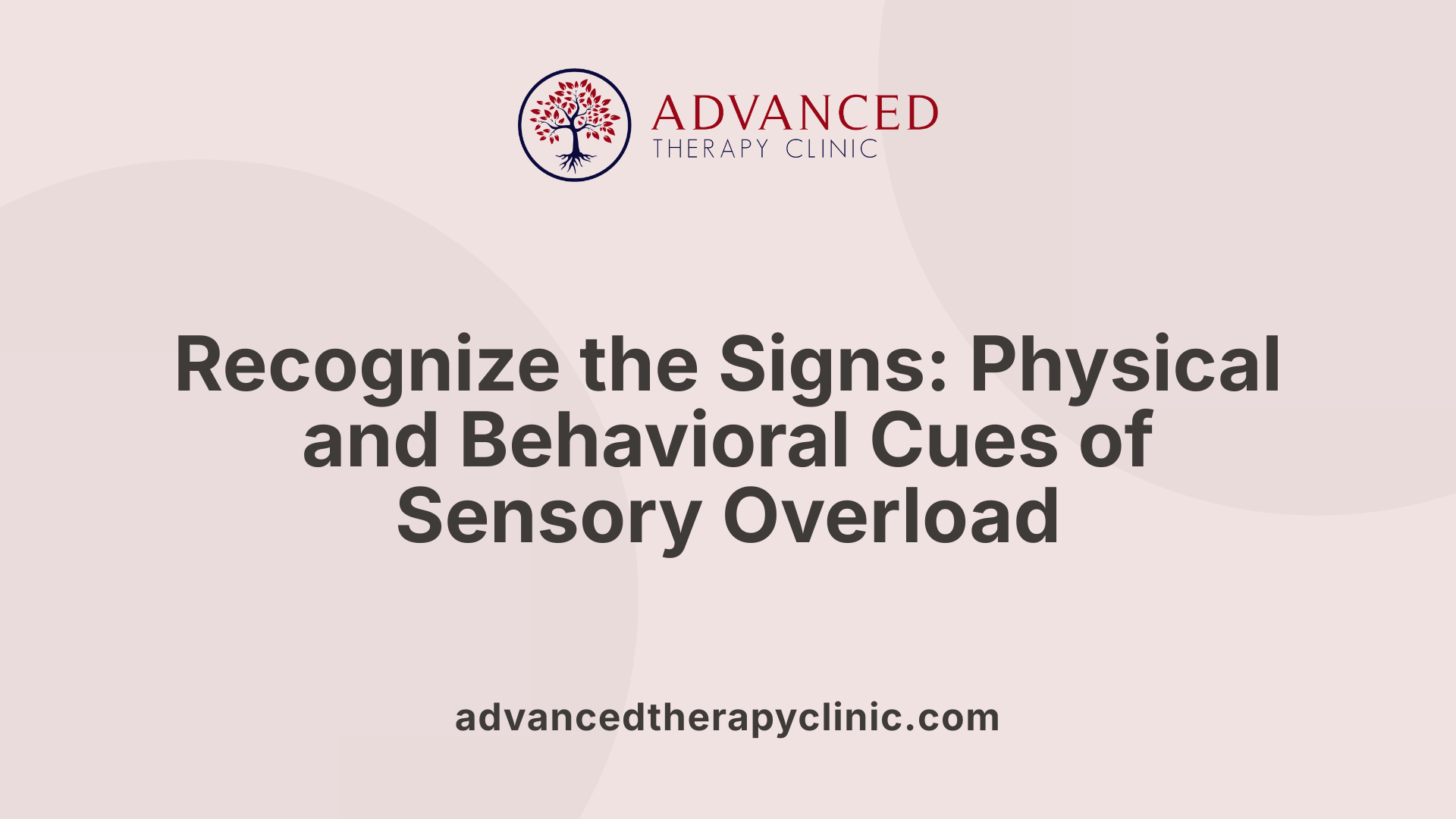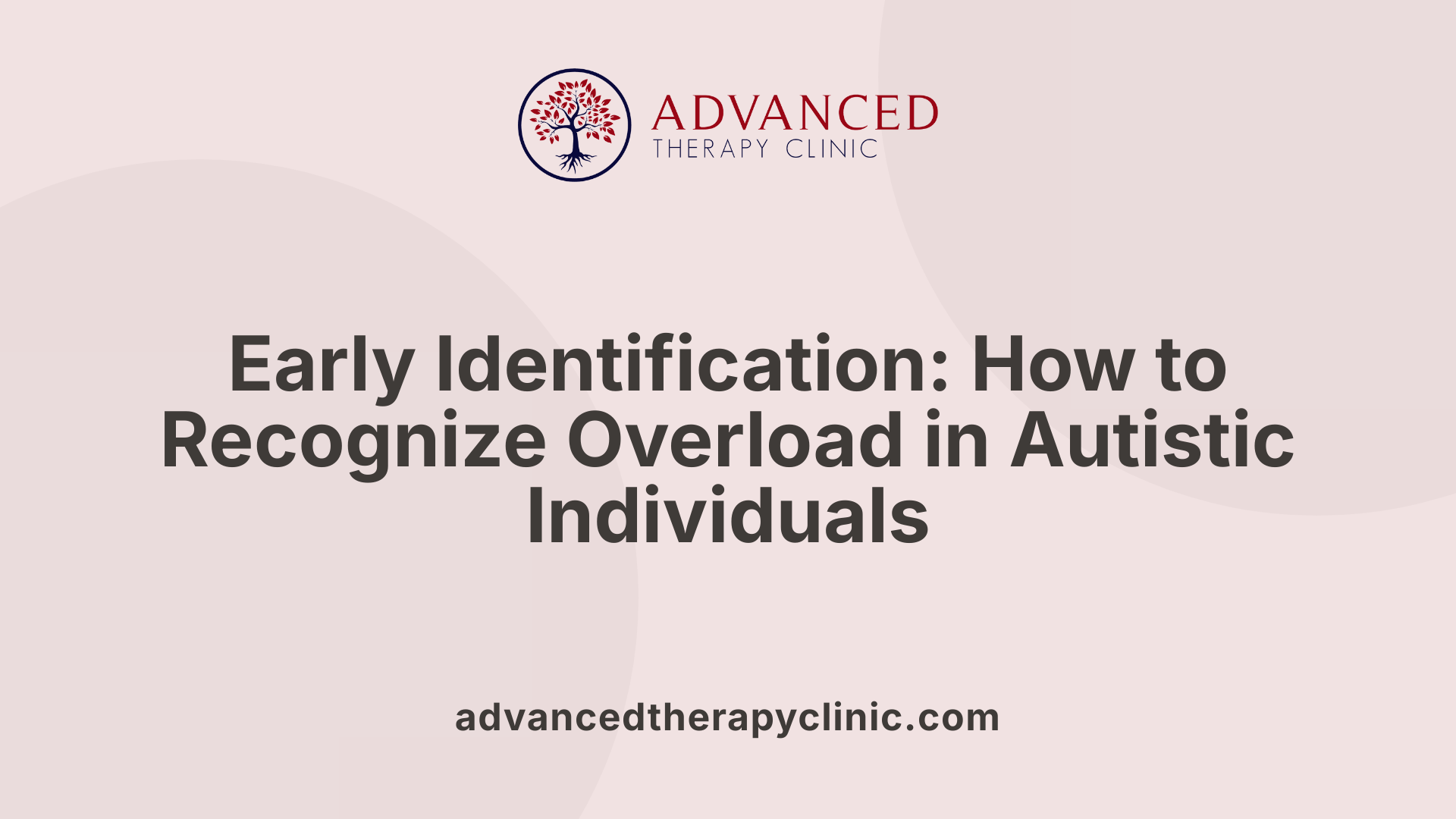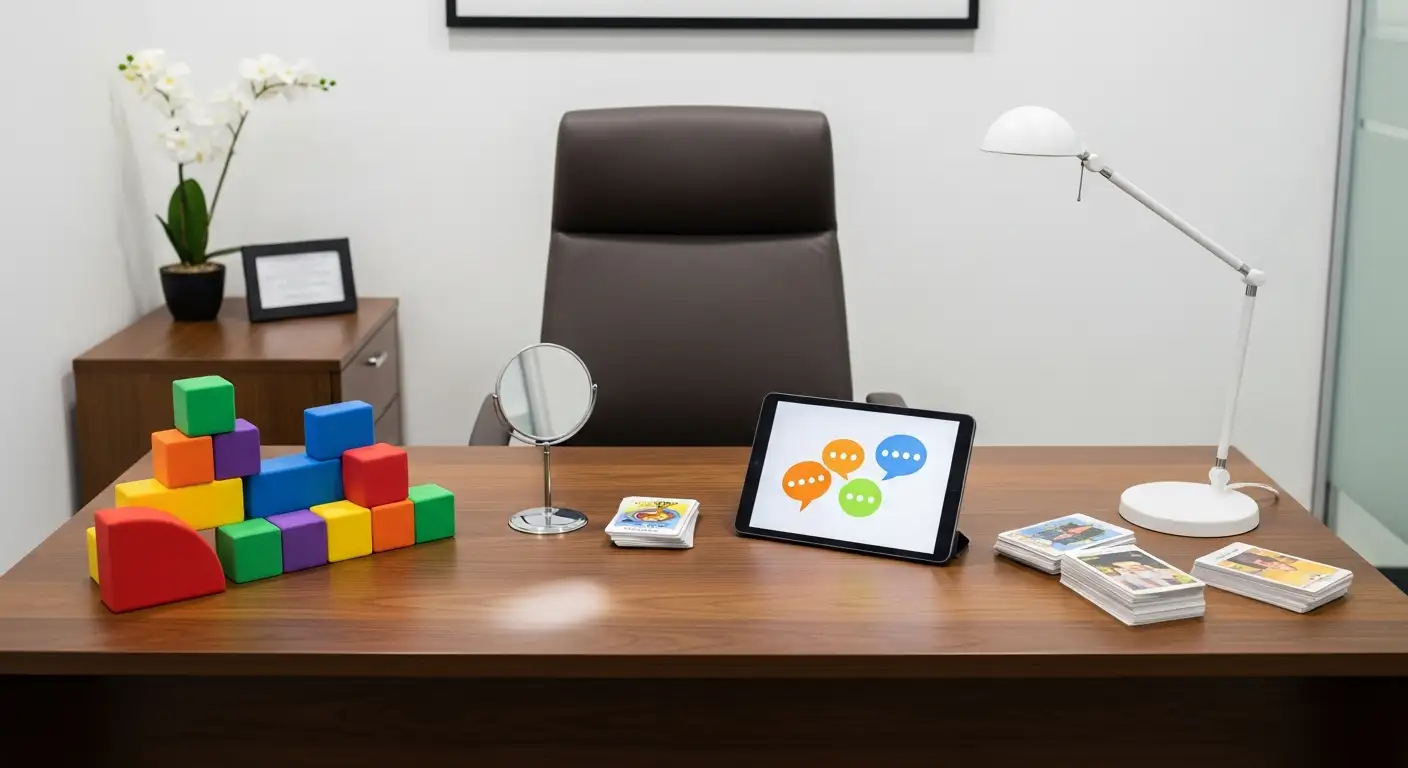Sensory Overload Autism Examples


Exploring the Complex World of Sensory Processing in Autism
Sensory overload is a common experience among autistic individuals, impacting their behavior, emotions, and daily interactions. Recognizing and understanding the signs, triggers, and responses associated with sensory overload is essential for providing support and creating safe environments. This article delves into real-life examples and expert insights to clarify what sensory overload in autism entails, including how to identify and manage it effectively.
What is Sensory Overload in Autism?

What is sensory overload in autism?
Sensory overload happens when an autistic person's senses take in more information than their brain can handle effectively. This excess input from sights, sounds, smells, textures, or environmental changes can lead to feelings of being overwhelmed and distressed.
Autistic individuals often encounter intense stimuli from their surroundings—such as loud noises, bright lights, strong odors, or sudden visual patterns—that do not fade out or lessen like they might for neurotypical people. This persistent incoming sensory information can cause significant discomfort and difficulty coping.
The experience of sensory overload can trigger a variety of behavioral responses. These include meltdowns, shutdowns, agitation, or trying to escape the overwhelming environment. Physically, signs may include covering ears or eyes, withdrawing, pacing, or repetitive behaviors like rocking or hand-flapping.
A unique aspect of sensory experiences in autism is the presence of both hypersensitivity (over-responsiveness) and hyposensitivity (under-responsiveness). Hypersensitive individuals react strongly to stimuli—finding bright lights or loud sounds painful or unbearable—while hyposensitive individuals may seek out intense sensory input because they do not feel enough stimulation otherwise.
Managing sensory overload involves a mix of strategies. Creating sensory-friendly spaces by dimming lights and reducing noise, using calming tools like headphones or fidget toys, and planning sensory diets tailored to individual needs are often highly effective. Recognizing personal triggers and responses helps support autistic individuals in maintaining comfort and emotional regulation.
Overall, sensory overload is a prominent and challenging feature in autism, but understanding and environmental adjustments can significantly improve quality of life and reduce distress.
Signs and Symptoms of Sensory Overload

What are common signs and symptoms of sensory overload in autistic people?
Autistic individuals often show a variety of signs when experiencing sensory overload. Physical signs frequently include covering their ears or eyes, shielding their face, or avoiding textures and smells that are overwhelming. They may turn away from intense stimuli or seek to block out specific sensory inputs.
Behaviorally, they might become more agitated or restless, which can lead to meltdowns or shutdowns. These behaviors include crying, screaming, head-banging, or flapping hands. Sometimes, they might try to escape the environment or reduce sensory exposure by leaving the area or covering their face.
Emotional symptoms can involve increased distress, frustration, and anxiety. This emotional response often escalates if the sensory overload continues without intervention.
Internally, they may have difficulty recognizing internal sensations like hunger or pain, which can add to their discomfort. The sensation of being overwhelmed activates the fight-or-flight response, causing physical reactions such as shaking, sweating, a pounding heart, or muscle tension.
Signs of sensory overload vary among individuals but usually include a combination of physical actions, emotional reactions, and internal sensations that result from the brain struggling to process excessive sensory input. Recognizing these signs early enables caregivers and support persons to help soothe and support autistic people through these challenging moments.
Recognizing When Autism Includes Sensory Overload

How can you recognize when an autistic individual is experiencing sensory overload?
Identifying sensory overload in autistic individuals involves paying close attention to both physical and behavioral cues. Physically, they may cover their ears or shield their eyes to block out overwhelming stimuli. Some might withdraw by turning away from noisy or bright environments, indicating they are overwhelmed.
Behaviorally, signs include increased agitation, such as pacing or fidgeting, and more self-stimulatory behaviors like hand-flapping or rocking. They may become non-verbal, scream, cry, or try to escape the situation. Physical distress symptoms like head banging or self-scratching can also be present, often as a way to cope with the overwhelming sensory input.
It’s important to recognize triggers that commonly cause overload, such as loud noises, bright lights, strong smells, or crowded places. Observing these signs early allows caregivers and support persons to intervene with calming strategies, help the individual find a safe space, or reduce sensory input promptly.
Understanding these physical and behavioral cues makes it possible to respond quickly and compassionately, helping autistic individuals feel more secure and supported in overwhelming environments.
Typical Behaviors During Sensory Overload

What behaviors and responses are typical during sensory overload?
When overwhelmed by too much sensory input, autistic individuals often display a range of behaviors that reflect their effort to cope with the intense stimuli. Common reactions include meltdowns and shutdowns, which are responses to feeling emotionally or physically overwhelmed.
During a meltdown, a person might cry, shout, scream, or lash out physically, such as kicking or flapping. This loss of control is usually driven by high levels of stress or sensory overload and is not a tantrum. Meltdowns often stem from accumulated sensory or emotional input that becomes unbearable.
Shutdowns differ by being more inward-focused. The individual may become unresponsive, dissociate, or withdraw into silence. They may seem numb or disconnected, often not responding to stimuli and appearing to conserve energy. This response helps them disconnect from overwhelming sensations or emotions.
In addition to emotional responses, behaviors like stimming—repetitive movements such as hand-flapping, rocking, or pacing—may increase. These behaviors serve as self-soothing mechanisms, helping to regulate arousal levels during overload.
Other typical behaviors include attempting to escape the environment by leaving a noisy or bright setting. They might cover their ears or eyes to block out certain stimuli or avoid specific textures, smells, or sights.
Physical signs of overload can include signs of distress like trembling, sweating, or a pounding heart, as the body reacts to the overwhelm. Restlessness, irritability, and difficulty concentrating are also common, reflecting the brain’s struggle to process excess sensory information.
Supporting someone during sensory overload involves reducing stimuli, creating safe spaces, and encouraging calming activities. Environmental modifications like dimming lights, using noise-canceling headphones, or providing sensory tools like fidget toys can help manage reactions. These strategies aim to help the individual regain a sense of control and comfort in challenging situations.
Common Triggers of Sensory Overload

What are common triggers that lead to sensory overload in autism?
Autistic individuals can experience sensory overload when exposed to specific stimuli that overwhelm their sensory processing systems. Common triggers include loud noises such as sirens, alarms, or busy crowds, which can be startling and overwhelming.
Bright, flashing lights or busy visual environments, like flashing screens or cluttered spaces, often contribute to sensory overload. Strong smells—whether pleasant or unpleasant—can also be difficult for autistic people to handle, especially if they are sensitive to odors.
Uncomfortable textures, from rough fabrics to sticky or itchy materials, may cause distress, as well as unfamiliar or strong-tasting foods that can lead to sensory avoidance. Unexpected physical contact or touch can trigger sensory responses, particularly when the individual is unprepared or sensitive to tactile input.
Environmental factors such as chaotic settings with many simultaneous stimuli—like crowded shopping centers, noisy schools, or busy streets—can easily overwhelm someone with sensory sensitivities.
Stress, fatigue, and sudden changes in routine further lower the threshold for sensory overload, making everyday situations more challenging. Recognizing these triggers allows caregivers and individuals to implement strategies like environmental modifications and routine planning, ultimately helping to reduce the frequency and impact of sensory overload episodes.
Strategies for Managing Sensory Overload

What are some ways to manage sensory overload in autistic individuals?
Managing sensory overload in autistic individuals requires a combination of environmental adjustments, sensory tools, coping techniques, and sometimes professional support. Recognizing early signs of sensory overwhelm, such as increased movement, covering ears or eyes, or agitation, allows caregivers and individuals to take proactive steps to reduce stress.
Creating a calming environment is essential. This can include dimming the lights, reducing background noise, and providing a quiet, safe space where the person can retreat when feeling overwhelmed. Environmental modifications like blackout curtains, soundproofing, and removing strong scents can significantly lessen overwhelming stimuli.
Sensory tools are highly effective in helping individuals self-regulate. Fidget toys, textured objects, weighted blankets or vests, and noise-canceling headphones can provide the sensory input needed to feel secure and calm. These tools serve as sensory anchors, helping the individual regain composure.
Coping techniques include deep breathing exercises, isometric activities such as squeezing a stress ball, and mindfulness practices that focus on grounding and relaxation. Teaching these methods during calm periods equips individuals to use them effectively during moments of overload.
Providing predictable routines and clear explanations for changes can ease anxiety, reducing the likelihood of sensory overload triggered by unpredictability. Giving ample time to process sensory input and communicate needs also plays a critical role.
Collaboration with healthcare professionals, like occupational therapists, can identify specific sensory sensitivities and recommend tailored sensory integration therapies. These interventions help improve sensory processing and resilience over time.
In public and educational settings, accommodations such as scheduled sensory breaks, the availability of quiet zones, and the use of visual schedules can support sensory management. Overall, a proactive and personalized approach helps autistic individuals navigate and mitigate sensory overload more effectively.
Creating a Sensory-Friendly Environment

How can creating a sensory-friendly environment help?
Creating a sensory-friendly environment plays a crucial role in helping autistic individuals better manage sensory sensitivities and prevent overload. Since many autistic people experience heightened or diminished responses to stimuli, designing spaces that minimize unnecessary sensory input can significantly reduce stress and anxiety.
Modifications in lighting, sound, and space are fundamental. For example, dimming harsh fluorescent lights, reducing background noise, and avoiding loud or unpredictable sounds create a calmer setting. Using calming colors and avoiding overly busy or patterned environments helps decrease visual overstimulation.
In addition, incorporating sensory tools like fidget toys, weighted blankets, or noise-canceling headphones provides tactile and auditory calming options. Creating safe spaces, such as quiet zones or designated calm rooms, offers individuals a refuge where they can retreat to regain composure during moments of sensory overwhelm.
These changes not only make environments more accessible but also foster emotional regulation and comfort. By reducing the number of overwhelming stimuli, autistic individuals can navigate daily life with greater ease, leading to improved well-being and social participation.
The Role of Support and Advocacy

How can self-advocacy help in managing sensory overload?
Self-advocacy plays a crucial role in helping autistic individuals manage sensory overload effectively. It involves understanding personal sensory needs and communicating them clearly to caregivers, teachers, employers, or colleagues. When individuals recognize the signs of sensory overload—such as increased agitation, covering ears, or withdrawing—they can proactively seek support.
Being an advocate means requesting accommodations like sensory breaks, quiet spaces, or changes to the environment that can help reduce sensory stress. For example, wearing noise-canceling headphones or using fidget tools can make a significant difference.
Promoting self-advocacy empowers individuals to take control of their sensory experiences, fostering independence. It encourages them to become aware of their thresholds and preferences, which is essential for reducing anxiety and preventing meltdowns.
Supporting self-advocacy also means educating support systems about sensory differences. When others understand the importance of respect and flexibility regarding sensory needs, it creates a more inclusive and supportive environment.
Ultimately, self-advocacy is about building confidence and ensuring that sensory challenges are managed with dignity, improving overall well-being and quality of life for autistic individuals.
Supporting Autistic Individuals with Sensory Overload
Understanding and recognizing sensory overload in autism is vital for providing effective support and fostering inclusive environments. By observing typical signs, identifying triggers, and applying targeted management strategies—such as creating sensory-friendly spaces and promoting self-advocacy—we can help autistic individuals navigate sensory sensitivities with greater confidence and comfort. Increased awareness and tailored interventions are key to reducing distress and enhancing well-being for those experiencing sensory overload.
References
- Sensory issues
- What does sensory overload look like and how can we help?
- Sensory Overload in Autistic Adults
- Autism and sensory processing
- How Adults With Autism Can Manage Sensory Overload
- Understanding autistic meltdowns and shutdowns
- Sensory issues
- What does sensory overload look like and how can we help?
- What is sensory overload? What you need to know
- Sensory Overload in Autism: Sensitivity Differences
Recent articles

What Is Speech Fluency?
Understanding the Essentials of Speech Fluency and Its Disorders

What Is Speech Fluency?
Understanding the Essentials of Speech Fluency and Its Disorders

Teaching Writing to Students with Autism
Unlocking the Potential: Effective Writing Instruction for Students with Autism

Teaching Writing to Students with Autism
Unlocking the Potential: Effective Writing Instruction for Students with Autism

Speech Therapist School
Navigating the Path to a Rewarding Career in Speech Therapy

Pediatric Speech Therapy Programs
Unlocking Potential Early: The Role of Speech Therapy in Pediatric Development


